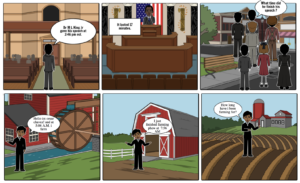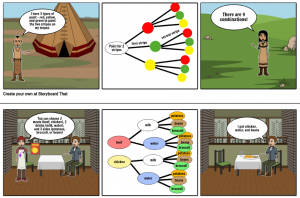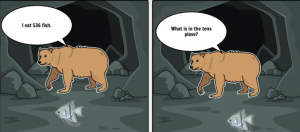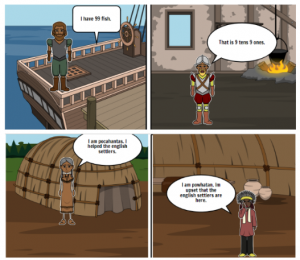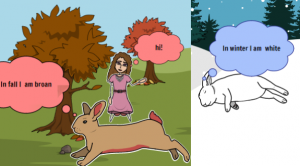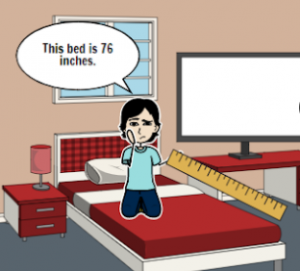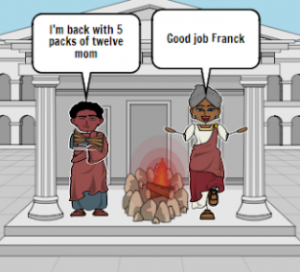3rd Grade Making Change Comics
 Third graders at Varina Elementary have been learning how to make change from $5.00 or less (SOL3.6c). Today, students in Ms. Hummel’s class created comics about different situations that involve making change. We used a great website for making comics called StoryboardThat. The comics had three panels: (1) in the first panel they had to tell how much the good or service cost, (2) in the second panel they had to tell how much money was paid, and (3) in the last panel they had to calculate the change that was given. StoryboardThat makes it easy to be creative because there are so many different backgrounds, and each character is completely customizable with different colors, facial expressions, and poses. We used the built-in, searchable clip art library to find additional objects for our comics like dollar bills and coins. Then students added speech bubbles (called textables) and practiced writing complete sentences with capitals and periods. They also learned how to add the $ dollar sign by pressing Shift and 4. Finally, we took screenshots of our comics and shared them on Schoology. You can see all their comics here. UPDATE: I’ve added additional comics from other classes to this document.
Third graders at Varina Elementary have been learning how to make change from $5.00 or less (SOL3.6c). Today, students in Ms. Hummel’s class created comics about different situations that involve making change. We used a great website for making comics called StoryboardThat. The comics had three panels: (1) in the first panel they had to tell how much the good or service cost, (2) in the second panel they had to tell how much money was paid, and (3) in the last panel they had to calculate the change that was given. StoryboardThat makes it easy to be creative because there are so many different backgrounds, and each character is completely customizable with different colors, facial expressions, and poses. We used the built-in, searchable clip art library to find additional objects for our comics like dollar bills and coins. Then students added speech bubbles (called textables) and practiced writing complete sentences with capitals and periods. They also learned how to add the $ dollar sign by pressing Shift and 4. Finally, we took screenshots of our comics and shared them on Schoology. You can see all their comics here. UPDATE: I’ve added additional comics from other classes to this document.

